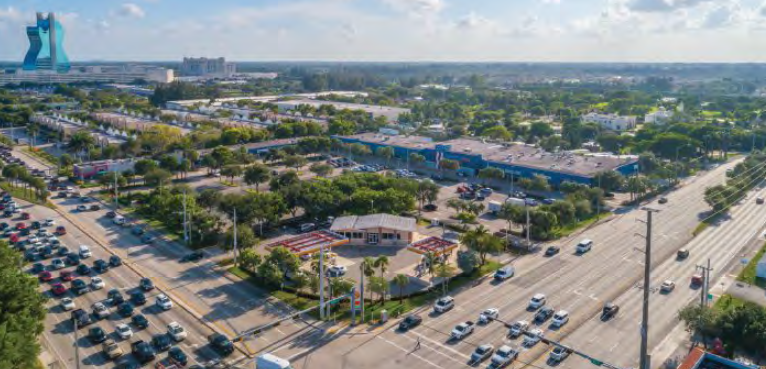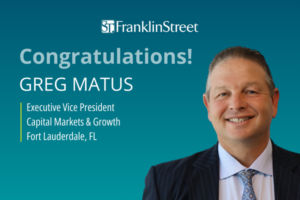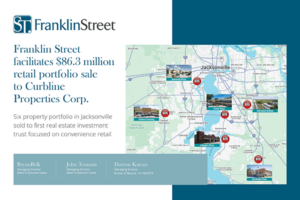Shopping Center Business recently published an in-depth feature on the Florida retail market. Franklin Street’s own Adam Tiktin, Managing Director of Investment Sales, and Carrie Smith, Senior Vice President of Retail, were both asked to share there insight for the story. Below are some of the highlights:
Florida was one of the first states to fully reopen its economy during the pandemic when Gov. Ron DeSantis lifted all COVID-19-related restrictions in May, following earlier partial moves. Those motions allowed the state’s retail sector to get an early recovery and resume the positive momentum of the years leading up to the outbreak of COVID-19.
…
Adam Tiktin, managing director of Franklin Street’s Miami office, says he has seen South Florida’s population increase and retail rents go up in the past year. Previously the president of Tiktin Real Estate Investment Services, which recently merged with Franklin Street, Tiktin attributes the
huge migration to people searching for a fresh start.
“More people are moving to South Florida now than ever because of
the quality of life. With COVID-19, a lot of people and companies were
reevaluating and basically saying, ‘Is this it? What else is out there?’ And
so, we’re seeing companies relocate from New York, New Jersey, Chicago
and even California [to Florida],” says Tiktin.
Tiktin says that retail investment sales transactions have increased, and
buyers are becoming more aggressive. “There are a lot more buyers and a
lot more tenants in the market than there were over the past few years, not
just during COVID-19, of course, but before that. It’s a seller’s market, and
it’s also a good time to be a landlord again because leasing has picked up,” says Tiktin.
…
In Jacksonville, Orlando and Tampa, there are similar trends for rental rates and occupancy. Carrie Smith, the regional managing director of Franklin Street’s Jacksonville office, says she has seen a slight uptick in Jacksonville’s retail rents from the beginning of 2020 through the second quarter at a little over $15 per square foot, and the vacancy rate has decreased to close to its record low of slightly above 4 percent.
In Orlando, Smith says Franklin Street have seen a slight increase to the overall average rental rate to $21 per square foot, with the vacancy rate decreasing steadily since the third quarter of 2020 to about 4.5 percent at the end of the second quarter. Lastly, she says the rental rates and occupancy in Tampa’s retail sector have stayed relatively flat since the beginning of 2020.
Tampa’s average rent growth was 4.3 percent at the end of the
second quarter, showing little change from third-quarter 2020. Smith says
that growth has accelerated in the Tampa Bay region, especially with
recent mixed-use developments under construction such as Water Street
Tampa, Midtown Tampa and Tampa Heights. Smith says her company anticipates seeing higher leaps in average rental rates starting in 2022 and 2023 because the deals her teams are working on now are seeing rents increase on average by 10 to 15 percent.
“Since the start of 2021, we’ve mostly seen rents go up across the board in retail. We believe this is a product of the rise in construction costs and labor shortages within the trade sectors,” says Smith. “With inflation on the rise, the consumer price index (CPI) has gone up, which has caused a big shift in our industry with landlords looking for annual increases of 5 percent or more sometimes, compared to the standard 3 or 4 percent.”




